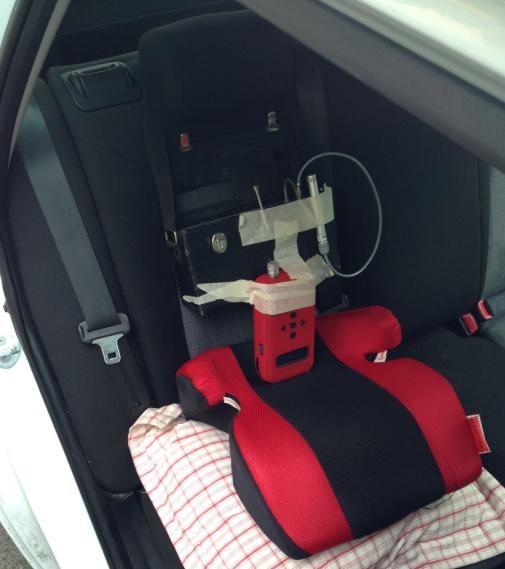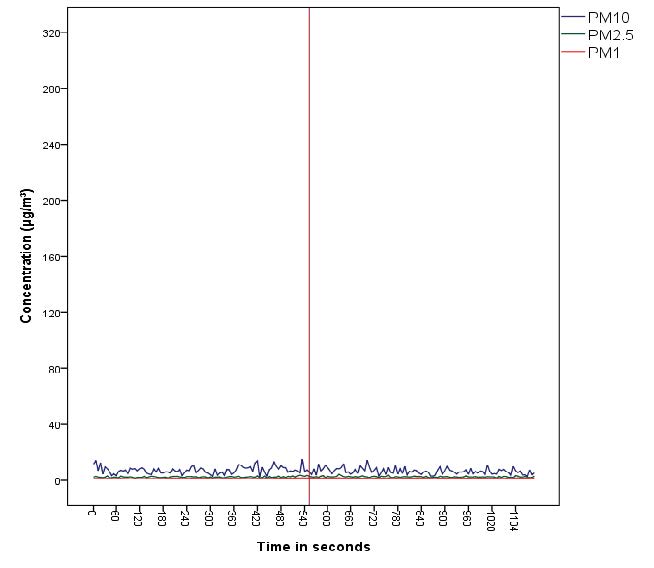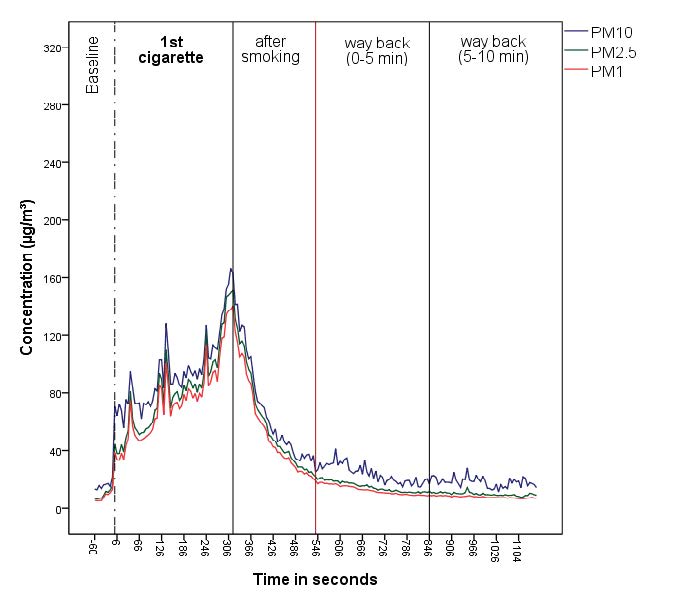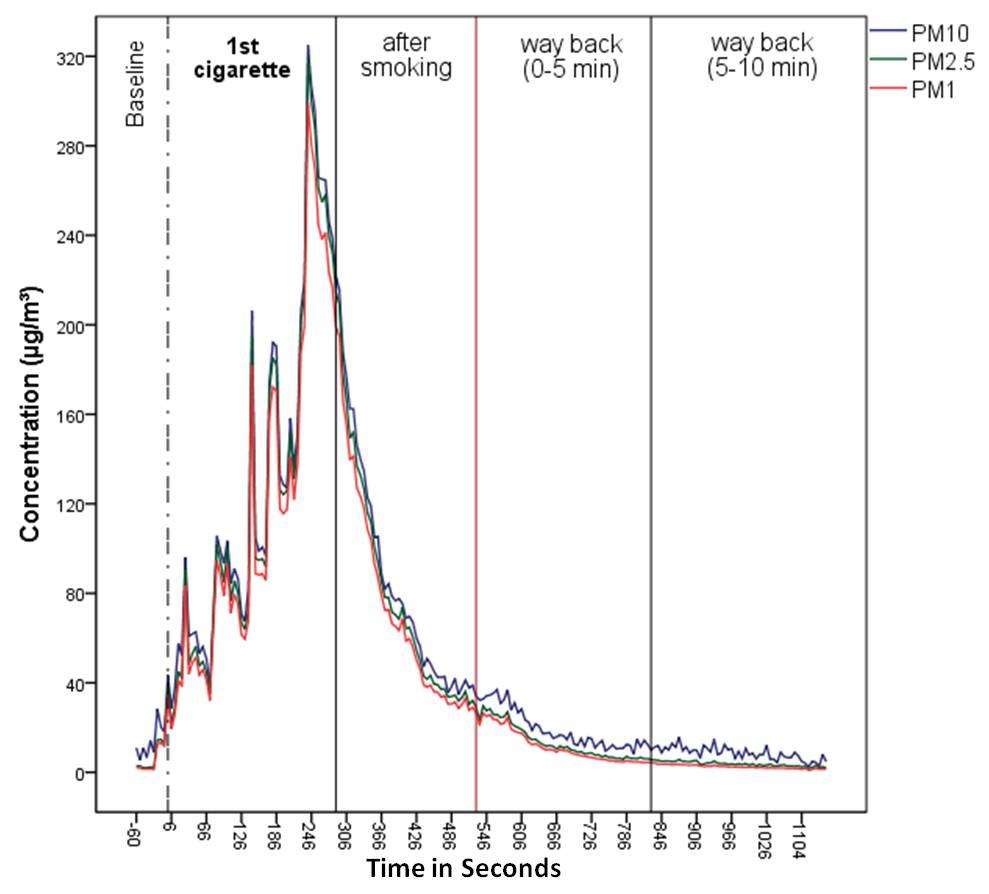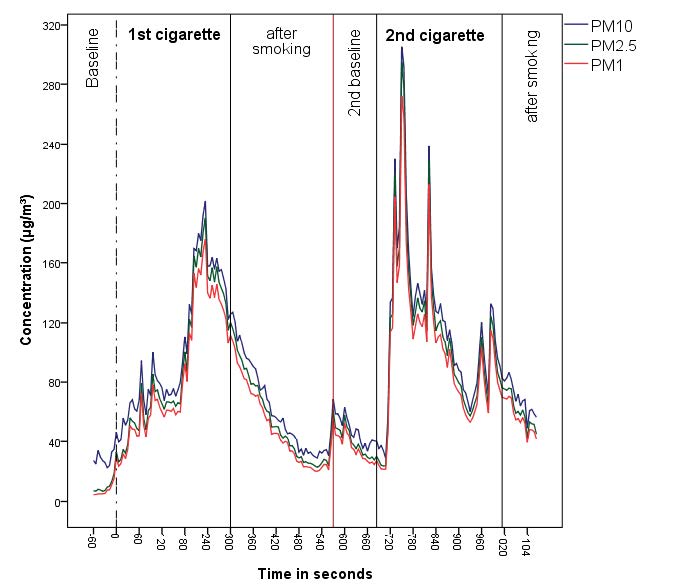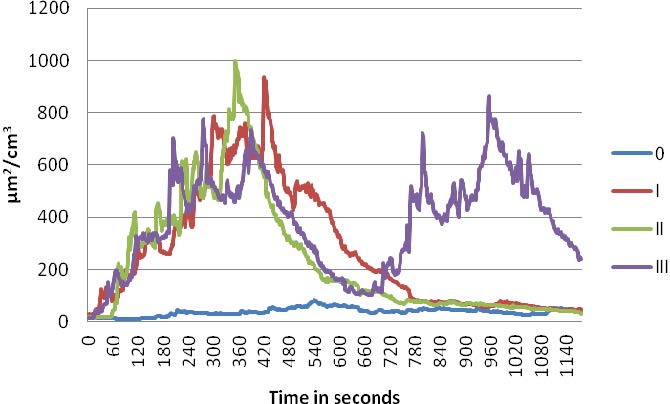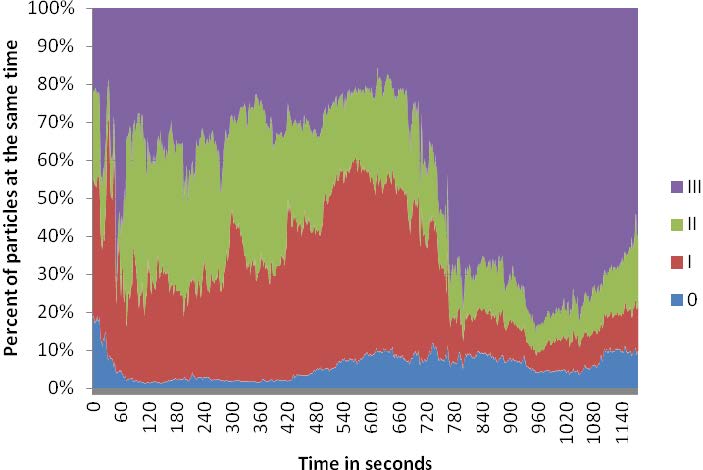1. Introduction
A high number of Austrian citizens are exposed to second-hand smoke (SHS) compared to other European countries. Non-smokers and minors are exposed to tobacco smoke (in workplaces, public places, home and in motor vehicles) more frequently than the EU average [1,2]. Intake of toxic and carcinogenic volatile organic compounds from SHS in motor vehicles have been previously studied[3]. However, when investigating acute effects of SHS on children, exposures to fine and ultrafine particles are more important. Existing research has shown how vehicle speed, window position and ventilation [4] can lead to large variation of exposure to PM2.5 [5]. Much less is known about exposures to PM1, ultrafine particle number (PN) and lung deposited surface area (LDSA), which we studied simultaneously with PM2.5 in standardized conditions designed to simulate a typical journey to school or kindergarten.
Studies show that children exposed to SHS are at higher risk of illnesses such as respiratory infections [6,7], cardiovascular diseases [8,9], food allergies [10], mental illnesses such as depression and sleeping disorders [11], cancer [12] and sudden infant death syndrome [13,14]. Whilst the role of ultrafine particles in these associations is still unknown, previous research in this field has focused on estimating exposure to PM2.5 rather than PN [14] and LDSA [15]. To our knowledge no study has measured LDSA on the child’s seat in relation to cigarette smoking.
Nine percent of all smokers in Europe consume tobacco products in cars in the attendance of children. In Austria this is higher with 16 percent of the smokers confessing to do so in 2006 [16].
2. Materials and Methods
For each scenario three return journeys on a fixed route from a suburban domestic area to a school were taken in a KIA Cee’d CRDI 1.6 motion SW (2009). This was designed to simulate a typical ten minute school commute.
An adult was smoking in the front passenger seat, while another drove. The smoker lit the cigarette during the first minute of the trip. In scenario 2 and scenario 3 the cigarette was placed near the opened window while smoking, in contrast to scenario 1 where the cigarette was smoked inside the car.
In scenario 0 two journeys without smoking were taken in advance to assess the background pollution inside the car while driving. These data were used for the statistic analysis (Table 1).
Table 1.Summary of the different conditions.
| Scenarios | Cigarette close to passenger window | Number of cigarettes smoked | Cigarette was smoked on the |
| Scenario 0 | - | 0 | - |
| Scenario 1 | No | 1 | way to school |
| Scenario 2 | Yes | 1 | way to school |
| Scenario 3 | Yes | 2 | way to school and back |
In all scenarios the front passenger window remained two inches open, with all other windows closed. The climate-control fan inside the car was turned off at all times. After the destination was reached, the back door on the passenger’s side was opened for ten seconds, simulating exit or entering of child, before the return journey under the same conditions.
The air quality was monitored by two devices: A miniature diffusion size classifier“minidisc”(Matter Aerosol), model G3_016 and by a laser-spectrometer and optical particle counter, model 1.108 (Grimm), which were fixed using a child’s car safety seat at approximately the height of a child’s nose (Figure 1). With these two devices the concentrations of the following parameters were recorded: PM1, PM2.5 and PM10 of particles larger than 300 nm, and number and LDSA of ultrafine particles (10-300 nm).
Nineteen public monitoring stations quantify ambient fine particulates on a daily data basis in Vienna. These facilities collect data on PM10 and PM2.5 every half an hour and were used to get an idea of the outdoor concentrations during the scenarios. Because higher background concentrations of PM10 and PM2.5 were observed on the day of scenario 1, the indoor exposures were also compared to the indoor baseline before lighting a cigarette.
3. Results and Discussion
Concentrations of PM10, PM2.5 and PM1 for each scenario are shown in Figures 2-5. For statistical analysis the following exposure times were distinguished: baseline (first minute of trip, before cigarette lit), smoking of first cigarette, after smoking, opening of backdoor (red line) and the return journey partitioned in 2 phases. As scenario 2 and scenario 3 had the same conditions during the way to school, the two scenarios were summarised for the statistical analysis and marked as scenario 2/3.
One single cigarette smoked during a simulated 10 minute journey from home to school, lead to a significant increase of PM10 (scenario 0: I: p 0.007; II/III: p 0.004; baseline: I: p 0.032), PM2.5 (scenario 0: I: p 0.01; II/III: p < 0.001; baseline: I: p 0.023) and PM1 (scenario 0: I: p 0.008; II/III:p < 0.001; baseline: I: p 0.023) in all scenarios during the outward journey in comparison to scenario 0 and the baseline for each journey.
There remained a significant increase of PM10 (I: p < 0.001; II: p 0.004), PM2.5 (I: p 0.003; II:p0.009) and PM1 (I: p 0.002; II: p 0.036) in scenario 1 and scenario 2 until minute 8 of the return journey in comparison to scenario 0. Compared to the baseline there was a significant increase of PM10 in scenario 1 for the first 2 minutes of the way back home.
Concentrations of PM10, PM2.5 and PM1 dropped after opening the back door, but remained elevated on the return journey in comparison to low outdoor concentrations. Holding the cigarette near the open window of the front passenger seat, did not reduce exposure on the back seat. A mean increase of PM10 by a factor of 10.5, for PM2.5 by a factor of 21.3 and for PM1 by a factor of 23.9 was detected, while smoking a cigarette in the front seat (Table 2). When a second cigarette was smoked on the return journey, concentrations rose again to comparable levels as before.
Table 2.Average concentration of PM10, PM2.5 and PM1.
| Average (µg m-3) | scenario 0 | scenario 1 | scenario 2 | scenario 3 |
| baseline | PM10 | 7.4 | 15.4 | 12.3 | 28.2 |
| PM2.5 | 2.4 | 9.2 | 5.8 | 9.9 |
| PM1 | 1.4 | 7.6 | 4.8 | 7.5 |
| 1st cigarette | PM10 | - | 94 | 129.6 | 104.1 |
| PM2.5 | - | 80.4 | 123.3 | 93.9 |
| PM1 | - | 73.7 | 114.8 | 86.2 |
| after smoking | PM10 | - | 68.9 | 85.6 | 54 |
| PM2.5 | - | 61.2 | 79.3 | 46.9 |
| PM1 | - | 55.9 | 73.3 | 42.5 |
| 2nd baseline | PM10 | - | - | - | 28.1 |
| PM2.5 | - | - | - | 16.6 |
| PM1 | - | - | - | 14.4 |
| 2nd cigarette | PM10 | - | - | - | 129.3 |
| PM2.5 | - | - | - | 120.2 |
| PM1 | - | - | - | 111.2 |
| way back (0–5 min) | PM10 | - | 24.7 | 18.7 | - |
| PM2.5 | - | 15.3 | 12.8 | - |
| PM1 | - | 12.9 | 11 | - |
| way back (5–10 min) | PM10 | 6.3 | 18.1 | 8.9 | 51.1 |
| PM2.5 | 2.5 | 9.9 | 3.8 | 43.1 |
| PM1 | 1.5 | 7.8 | 2.5 | 39.2 |
The highest concentration of Ultrafine Particles, at almost 10 times higher than scenario 0, was found in scenario 3 (153,498 ptcm−3), where two cigarettes were smoked. But even one single cigarette smoked (Scenario 1: 97,701 pt cm−3and scenario 2: 90,796 pt cm−3) contaminated the air in the car significantly compared to scenario 0 (Table 3). Similar to the PM analysis the high ultrafine particle numbers decayed continuously after the cigarettes were burnt down. In the scenarios with one cigarette smoked, particle number concentrations reached background concentrations at the end of the return journey. The time course of LDSA was similar (Figure 6).
Table 3.Number of Ultrafine Particles and LDSA.
| | LDSA (µm2 cm-3) | Ultrafine Particles (pt cm-3) |
| scenario 0 | Mean | 38.4 | 15,545 |
| Maximum | 10 | 3690 |
| Minimum | 81 | 31,362 |
| scenario 1 | Mean | 270 | 97,701 |
| Maximum | 27 | 11,205 |
| Minimum | 937 | 401,026 |
| scenario 2 | Mean | 231.9 | 90,796 |
| Maximum | 15 | 6446 |
| Minimum | 998 | 411,197 |
| scenario 3 | Mean | 383.9 | 153,498 |
| Maximum | 15 | 6830 |
| Minimum | 862 | 418,616 |
Figures 6 and 7 show that in scenario 1 there was a longer duration of high particle number concentration and LDSA incomparison to scenario 2 and 3, although the maxima were similar. An explanation could be that the faster airstream caused by smoking closer to the open window led to a faster burning of the cigarettes in scenario 2 and 3. In scenario 1 the mean smoking duration was 5.3 minutes and in the other scenarios 4.7 minutes, however, due to the small number of measurements taken this difference was not statistically significant.
The correlation between LDSA and particle number was highly significant: Spearman’s rank correlation coefficient between 0.95 and 0.996, p < 0.0001. The total amount of LDSA accumulated over the return journey, of approximately 20 minutes duration, was in scenario 1 (21.6 mm2), scenario2 (18.6 mm2) and scenario 3 (30.7 mm2).
This study shows that a single cigarette smoked in a car, even with the window opened, lead to an alarming increase of fine particle mass and ultrafine particle number and surface, which is in agreement with results of former studies [17,18].
There were slightly lower averages of PM10, PM2.5 and PM1 concentrations found in scenario 1, when the cigarette was smoked inside the car, than in scenario 2 and scenario 3 where the cigarette was held near the window (Table 2). This unexpected result confirms earlier observations of higher averages when holding a cigarette outside the car [5,19].Under similar conditions Edwards et al. [19] have found a mean concentration of PM2.5 of 162 µg m−3 when the cigarette smoked was held outside compared to 119 µg m−3 when the cigarette was held inside the car.
Sohn et al. [20] investigated the effect of the window opening conditions on PM2.5 and UFP while smoking in a moved car. PM2.5 levels stayed elevated even after a 15 minute ride with the driver’s window 4 inches open, while UFP levels reduced to the baseline levels in 10 minutes, independently of the opening of the driver's window (fully, half or 4 inches open) [5,20].
Private family cars are one of the most frequent areas where exposure to SHS happens. A survey of 12,269 adults in England in 2014 revealed that 77 percent of the people, 63 percent of them active smokers, supported legislation that bans smoking under the presence of children in the car[21].
4. Conclusion
One single cigarette smoked in a moving car, with the passenger’s window open, exposes other passengers and especially children to elevated particle concentrations in the fine (0.3-2.5 µm) and ultrafine (10-300 nm) size range. This may pose threats to health. On the child’s car safety seat there was an increase of PM2.5 and PM1 by the factor of 21.3 and 23.9 compared to background concentrations before the cigarette was lit. Holding the cigarette to the 2 inches open window did not prevent an increase of PM2.5/PM1/PN/LDSA to 123.3 µg m−3/114.8 µg m−3/90,796 pt cm−3/231.9 mm2 m−3 on the outward journey. Some contamination remained on return journey, but when a second cigarette was lit, PN concentration reached 153,498 pt cm−3 on the child’s car safety seat. This paper also shows that the common belief that, smoking near an open window reduces concentration of toxic fine particles within the vehicle, is incorrect.
Acknowledgments
This work was performed as diploma thesis at the Medical University of Vienna. Apparatus was provided by the Commission of Climate & Air Quality of the Austrian Academy of Science.
Conflicts of interest
All authors declare no conflicts of interest in this paper.









 DownLoad:
DownLoad: 